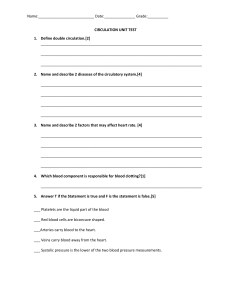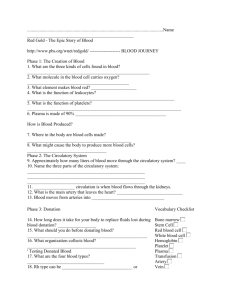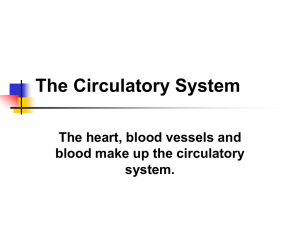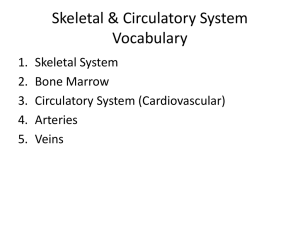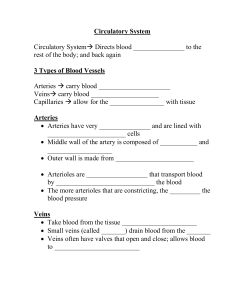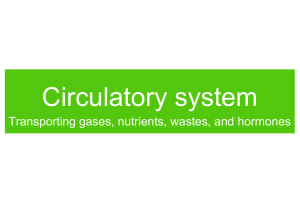Circulatory System Melinda Klockziem (3202H) Topic: Circulatory System
advertisement
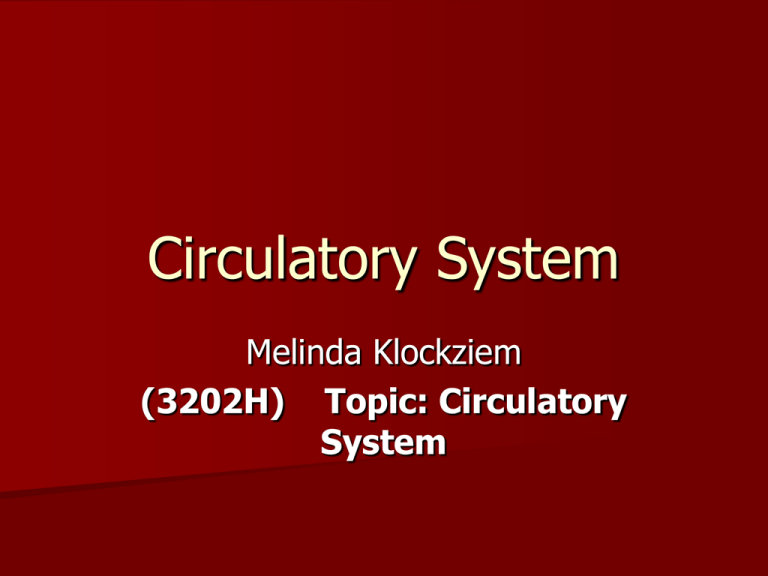
Circulatory System Melinda Klockziem (3202H) Topic: Circulatory System Hematology Study of Blood Structure of Blood Blood is composed of : – 40% cells and 60 % plasma The cells that are in the blood are: – Erythrocytes (red blood cells) – Leukocytes (white blood cells) – Platelets Hematopoiesis The formation and development of blood cells – hem = blood, poiesis =formation & development. All blood cells develop in the bone marrow from one type of cell Erythrocyte (Red Blood Cell) The most abundant blood cell Function – transport O2 throughout the body Leukocytes (White Blood Cells) The body’s main defense against infection 5 Types of WBC – – – – – Neutrophil Basophil Eosinophil Lymphocyte Monocyte Thrombocyte (Platelets) Hemostasis (clotting) – stop bleeding by adhering to damaged vessels and clumping together release proteins that help form a clot Clinical Hematology PCV – Packed Cell Volume Is the percentage of the RBC compared to the total sample. If below normal – Anemia Normal Values % – Dog: 37-55 – Cat: 30-45 Horse: 32-48 Bovine: 24-46 Arteries Thick-walled muscular vessels Carry blood away from the heart Arteries are used as pulse points on the body. Arteries Blood Pressure – Vasoconstriction Contracts diameter decrease Increase BP – Vasodilatation Relaxes diameter increases decrease BP Largest Artery – Aorta – Originates from the left ventricle. sonofsun.sdsu.edu/class/bio590/ pictures/lect5/5.2.html www.nlm.nih.gov/medlineplus/ ency/imagepages/8983.htm Veins Carry blood to the heart Much thinner and less muscular than arteries Contain valves to keep blood flowing in one directions sonofsun.sdsu.edu/class/bio590/ pictures/lect5/5.2.html Veins Largest Vein – Vena cava Used for blood collection and administration of intravenous medications

